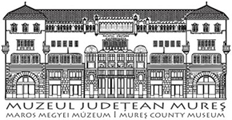Marisia - Maros Megyei Múzeum Évkönyve 30/1. (2010)
Articles
98 N. Man Ceramic moulds ex-voto Their presence denotes a diversified production of the ceramic centre from Criste§ti. The pieces made with these artefacts had certain religious requirements, and their analysis helps us to understand the religion of their users. Two moulds have a medallion shape and they were used to make ceramic ex-voto or to decorate pottery. The first is fragmentary, reproducing the feet of a horse while the second is representing Serapis. Another fragment is rectangular, bordered by two handles and represents a mould votive plaque dedicated to Domina et Dominus, while another reproduces Liber Pater in an offering scene. This pattern has a shaped niche with a gable and a wide rim decorated with three buttons in the centre. The scene is bordered by two columns, in the centre with a nude Liber Pater, who keeps a massive thirs in the left hand and in the right a round object, probably a patera, which supports an altar. Similar representations are known in other centres of Dacia, as well.26 The medallion with the representation of Serapis is worked in an elaborated technique, showing remarkable artistic skills. The god is depicted as a strong man, with the beard and the hair worked “in repousse” technique. He is wearing a calathus, a crown of laurels on the head, with a lemniscus, while the bust is covered by a chiton. This representation of Serapis is a general iconographic representation. Its rigid appearance lacking motion and the fixed look are specific features of Roman art, especially in religious representations, even if the Hellenistic or Greek models appear more dynamic. This kind of artistic representations generalized in the third century, when oriental influences began to play an important role in the religious manifestations of the communities. This piece may be dated in the second half of the 3rd century, when the cult of Serapis was highly spread in the Empire. Such representation is also known in Dacia at Apulum, Potaissa and Ulpia Traiana.27 According to recent researches,28 it seems that such large medallions were also used for ritual cakes, and only smaller medallions were used to decorate pottery. Because of the negative text, the artefact was a sacred or votive pattern. An earlier interpretation of this mould is that it was dedicating to a goddess Domina and to a god with the epithet propitius.29 30 Based on the analogies from the Empire, Sz. Pánczél offers a new interpretation of the text: [Do]m(i)na et/ [Dom](i)nus prop(itii).i0 Thus, in the pantheon of Eastern Dacia two other deities appear: Dominus et Domina. Vessels decorated with snakes Although the role of these vessels is clearly religious, having a special purpose, because of their appearance they were interpreted, as common household utensils. A detailed analysis of their destination was made by V. Rusu-Bolindet.31 Under the influence of the Greek religion the serpent appears as an attribute of gods like Demeter, Minerva, Apollo, Liber Pater, Bona Dea, Silvanus, Fortuna, Sabazios, Esculap or Hygia. In the Mithraism serpent together with the bull appears as a constant attribute. In Italy the snake 26 Pop 1972, 178; Cods 1987, nr. 2. 27 Popa 1965, 231. 28 Ruscu 1992, 125-134; Cocis-Ruscu 1994, 121-125. 29 IDR, 3/4, 124, nr. 166. 30 Pánczél 2010. 31 Bolindet 1993, 123-143.
